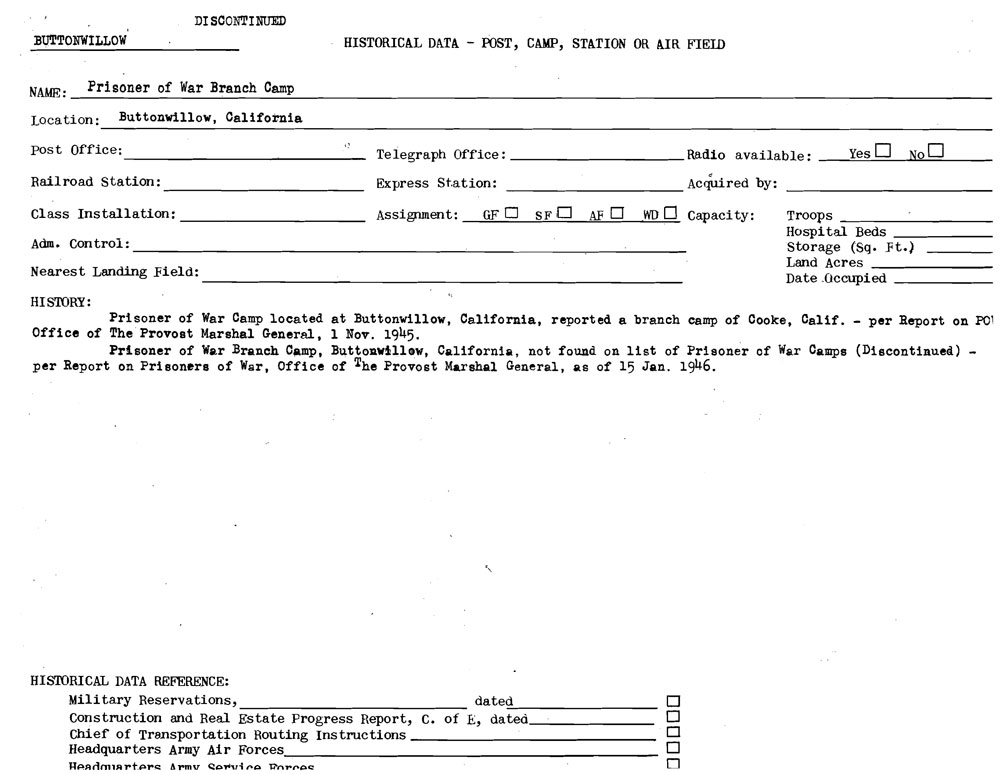
A Prisoner of War Branch Camp located at Buttonwillow, California, reported a branch camp of Camp Cooke, Calif. - per Report on Prisoners of War, Office of The Provost Marshal General, 1 November 1945. It was not found on list of Prisoner of War Camps (Discontinued) - per Report on Prisoners of War, Office of The Provost Marshal General, as of 15 January 1946.
The camp was a temporary camp that held 250 German prisoners who worked on local farms. It was activated 24 October 1945 and inactivated14 January 1946. As this was a temporary camp, prisoners were housed in M-1934 16 ft. x 16 ft.conical tents whch normally housed six or seven prisoners. Since the war had ended by the time this and many other agricultural branch camps were established, security was minimal.

When the need for a branch camp was identified
and certified as valid to the Army, it sent a team to select a
site for the camp to fulfill the contractor’s requirements
while still ensuring that the prisoners would be properly housed
and secured. In many cases, few or no adequate buildings were
available for prisoner relocation, so the Army developed a “mobile
unit” package that could be set up quickly to temporarily
house 250 POWs. It consisted of 42 tents, sized 16’ by 16’,
allowing 6 or 7 men per tent. Seven additional tents of the same
size were used as office and storage buildings. Four larger tents
were used, one each, for mess hall, shower, latrine, and chapel/recreation
purposes. This entire layout was set up in a compound bordered
by a single wire fence that measured 282 by 550 feet (155,100
square feet). Portable guard towers, with searchlights, were placed
at opposite corners of the compound to permit clear
observation in the camp. Light poles were erected at intervals
both inside and outside the camp. Each tent would have one or
more light bulbs for night use.
The guard force for a branch camp of 250 POWs consisted of approximately 160 officers and men. It was composed as follows: 30 camp guards; 70 “prisoner chasers” who were the guards accompanying the POWs to and from work sites and monitoring them during work hours; 15 NCOs to oversee the guard force; seven support staff such as cooks and clerks; 33 drivers and mechanics; and five medics. Usually five officers were assigned including the camp commander, three camp officers, one supply and mess officer, one POW company commander, and one medical officer (if available).

Source Army Center of Military
History and US Department of Defense